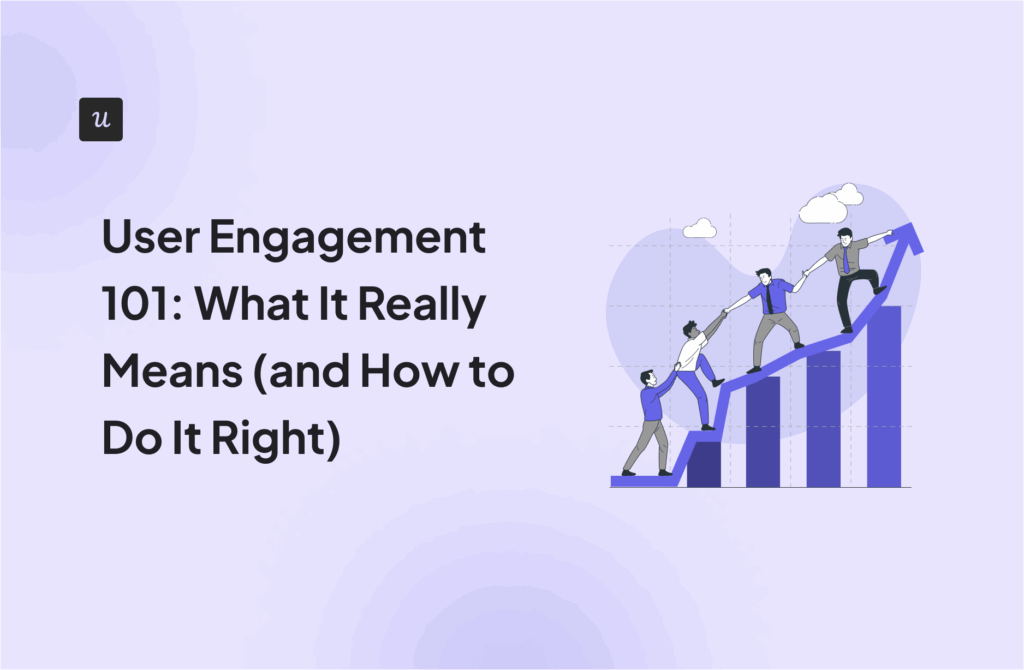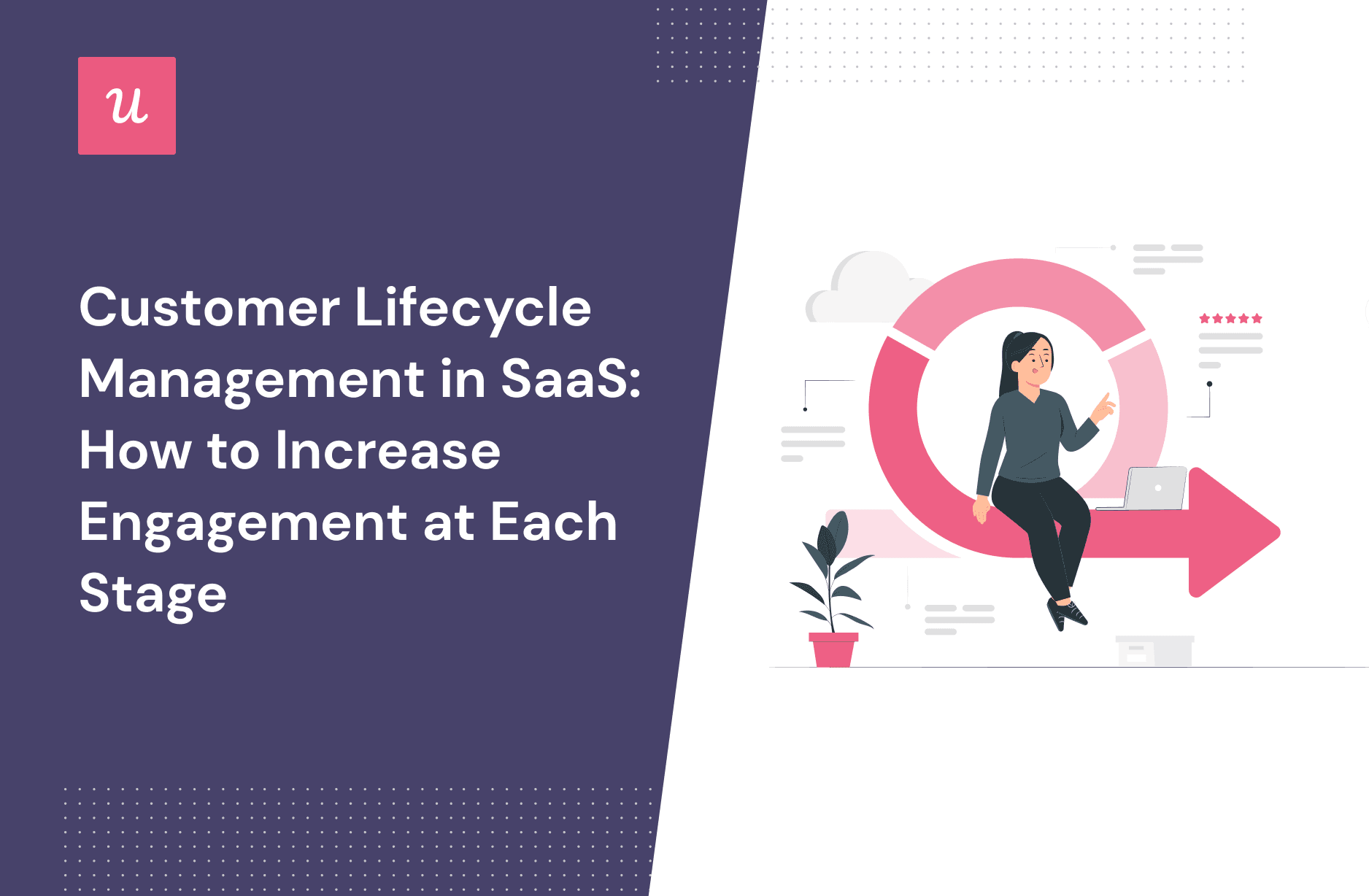
Customer Lifecycle Management in SaaS: How to Increase Engagement at Each Stage
What role does customer lifecycle management play in SaaS? How do you increase engagement at each stage of the customer lifecycle? If you wonder about these questions, we’ve got you.
In this blog post, we’ll explore five stages of the customer lifecycle in detail and offer tips on how to boost engagement at each one. Read on to uncover product growth insights!
How do you guide new users to their “aha” moment during the conversion stage?
Try Userpilot Now
See Why 1,000+ Teams Choose Userpilot

What is the customer lifecycle?
The customer lifecycle refers to the steps a customer progresses when considering, purchasing, using, and maintaining loyalty to a product or service. It typically consists of five stages — reach, acquisition, conversion, retention, and loyalty.
What is customer lifecycle management?
Customer lifecycle management (CLM) is the process of tracking and managing customer relationships through each phase. It involves understanding customers’ needs, preferences, and behaviors by assigning and measuring customer-related metrics to each customer lifecycle stage.
Afterward, product managers use that knowledge to optimize the customer experience. The goal of CLM is to maximize customer engagement, satisfaction, and retention.
Customer lifecycle management vs. customer relationship management
Both entities help businesses foster customer relationships, increase customer satisfaction, and ensure recurring profits.
Customer relationship management (CRM) emphasizes monitoring and managing customer relationships by tracking individual customer interactions. For example, customer service reps may use CRM software to keep track of customer complaints or inquiries and manage customer support tickets.
In contrast, CLM focuses on the entire customer journey to find opportunities for improvement, such as onboarding, retaining, and upselling customers. In other words, it’s about ensuring that customers receive the best experience at every stage of the customer journey by identifying and addressing friction points.
Why is customer lifecycle management important?
Customer lifecycle management is vital for SaaS to build meaningful relationships with new and existing customers.
It lets you track the customer journey and guide your users toward customer loyalty and advocacy while improving customer experience at each stage.
Customer lifecycle stages
The customer lifecycle in SaaS consists of 5 stages: reach, acquisition, conversion, retention, and loyalty. Let’s look into each one.
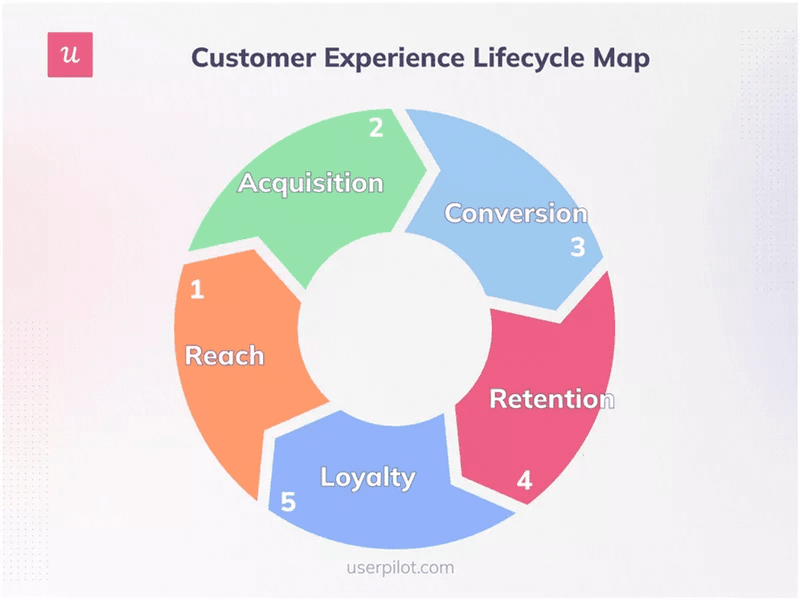
Reach: This is the first stage when customers become aware of a company through advertising campaigns or word of mouth. Potential customers analyze competing products and read reviews.
Acquisition: At this stage, customers take action and start to interact with the company by visiting its website, booking a demo call, or starting a free trial.
Conversion: Customers convert into paying customers by signing up for a subscription or purchasing a product.
Retention: After customers become paying customers, businesses must keep them engaged with the product or service.
Loyalty: In this stage, customers show loyalty to the company by advocating for them and referring new customers. This happens when customers are happy with your product and services.
By understanding customers at each lifecycle stage, businesses can create strategies to optimize customer experience and streamline the process.
How to manage the customer lifecycle?
Customer lifecycle management aims to ensure customers have a positive experience with the company throughout their journey. Businesses should work on each stage separately to effectively manage the customer lifecycle.
Managing the reach stage
This is the stage where you reach out to your product’s prospective customers and familiarize customers with your solutions. In other words, you build awareness about your company with targeted marketing efforts.
Define your target audience
Defining your target audience means understanding who your ideal customer is, including their demographics, firmographics, jobs to be done, pain and challenges, etc.
Create user personas that will help you better understand your customers and cater to their needs with engaging marketing campaigns.
You can use ready-made user persona templates to define your ideal customer, their pain points, and their goals.
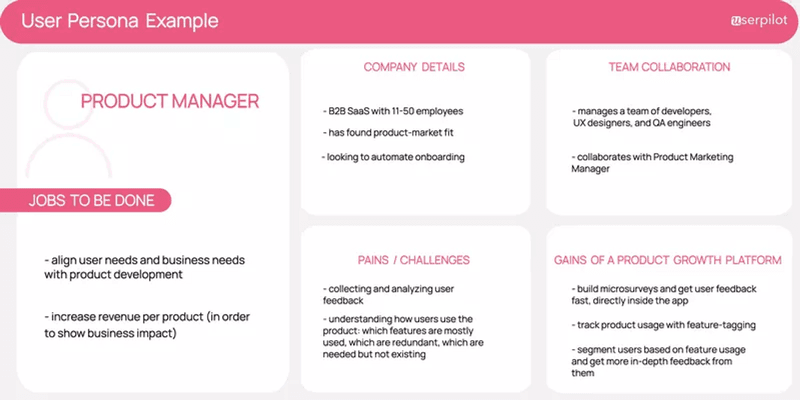
Share informative and relevant content
Once you develop your user personas, share informative and relevant content that resonates with their interests and needs across different channels and in various forms.
For example, engage with customers on social media platforms, write informative blog posts, launch a podcast, and more.
Managing the customer acquisition stage
The acquisition stage in SaaS is quite different from B2B and it usually starts with a trial or demo since customers want to interact with the product and experience value before purchasing.
In the product-led growth model, the main driver of acquisition is freemium accounts, product demos, or trials.
Use live demos to showcase your product
Use in-person demos to connect with customers and show your product’s value.
Personalize each demo by addressing their pain points and showcasing how your product can help them achieve their goals. Get your leads to the “aha” moment during a demo.
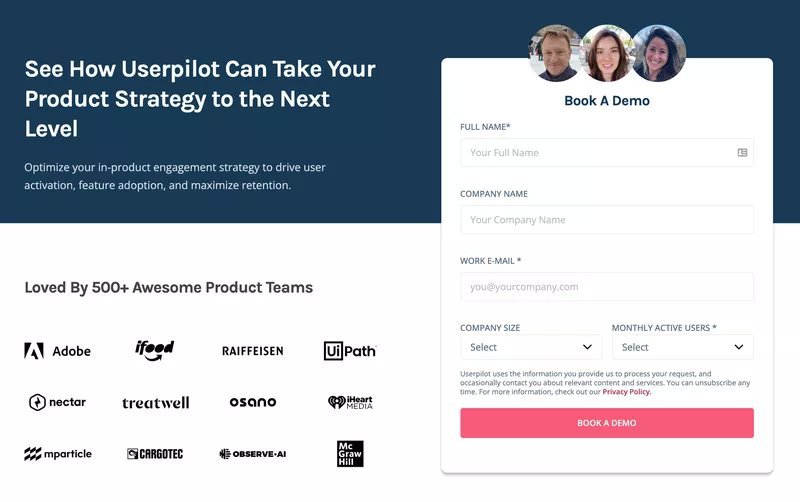
Use free trials and freemium models to attract potential users
While demos work great for products with a steeper learning curve, if your product is relatively easy to use and intuitive, make sure your freemium plan offers enough value to solve users’ basic JTBDs but limits its functionality to advance users to upgrade.
The same applies to trials: a 5 or 7-day free trial length is usually enough to test features out and decide whether a product matches your needs.
Also, consider paid trials to qualify leads.
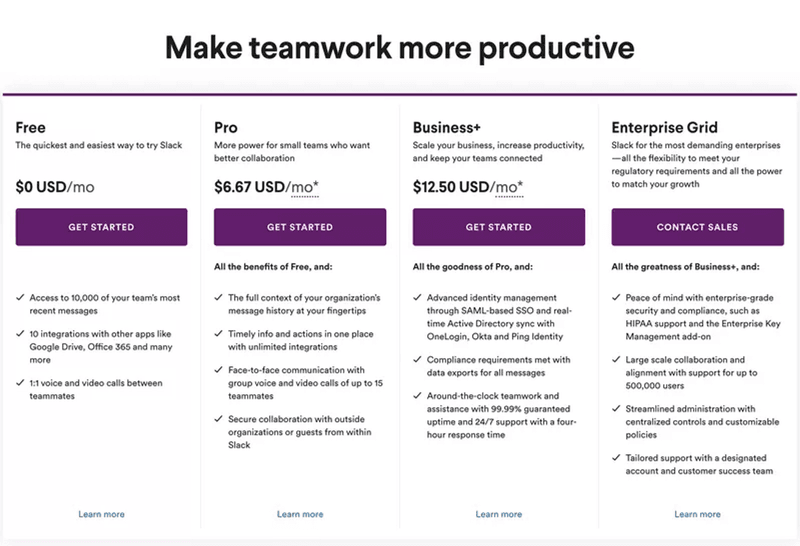
Managing the conversion stage
At this stage, you need to drive free trial or freemium users into becoming paying customers. To do that successfully, you need to create effective onboarding processes that will guide users through their journey to the activation point faster (aka drive product adoption).
Drive users to the activation stage so they experience value
During the activation stage, users start to engage and experience value from the product. Help users get the most out of your product by guiding them with onboarding flows, interactive walkthroughs, and checklists.
As such, use onboarding checklists to prompt users to take action and engage with the right features for their use case that will drive value. Tailor checklists to their JBTDs to deliver relevant information and drive product adoption.
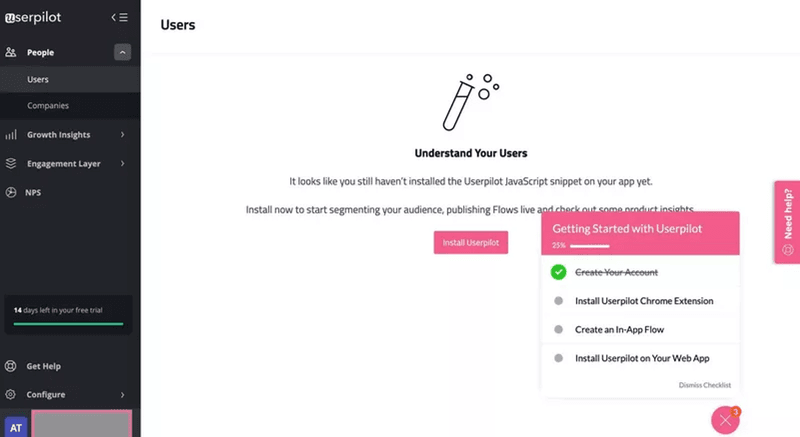
Offer Freemium Users Free Trials to Paid Features
This strategy is one of the best practices for account expansion since users are more likely to turn into paying customers if they have tried premium features and know what benefits they can harvest.
With that, let customers have first-hand experience with premium features and push them to switch from the free plan to a paid version. How? Let’s learn from Asana’s example.
Asana turns to in-app personalization to drive freemium to premium conversion by showing upgrading popups to active freemium segments. Thus, Asana showcases the Goal feature available on paid plans only but offers a free trial.
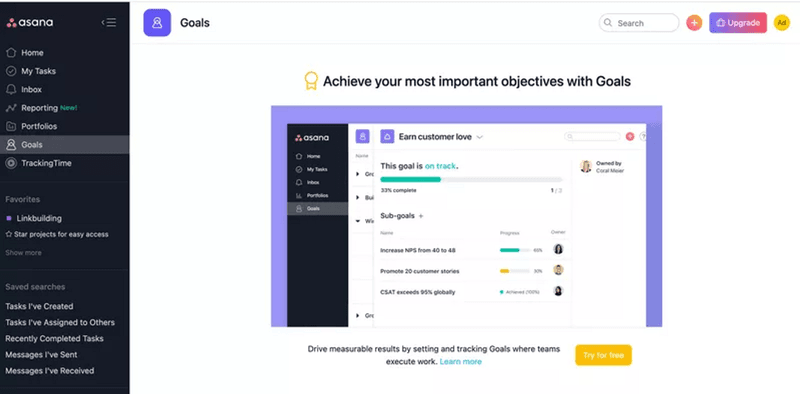
Managing the customer retention stage
This stage helps you keep your customers engaged. Offer continuous value to customers to make them stick around once they reach the activation moment. You can do this by creating a customer retention strategy. This means delivering in-app and on-site content, such as newsletters, blog posts, or other educational resources that engage users.
Similarly, in-app content includes secondary onboarding content that highlights unexplored features that might help with a user’s JBTDs. Let’s dive into it.
Help users discover secondary features
You want to provide users with contextual guidance to increase product stickiness and deliver delightful experiences.
So first, you have to find out what features bring the most value to your power users.
You can tag and track feature usage with Userpilot.
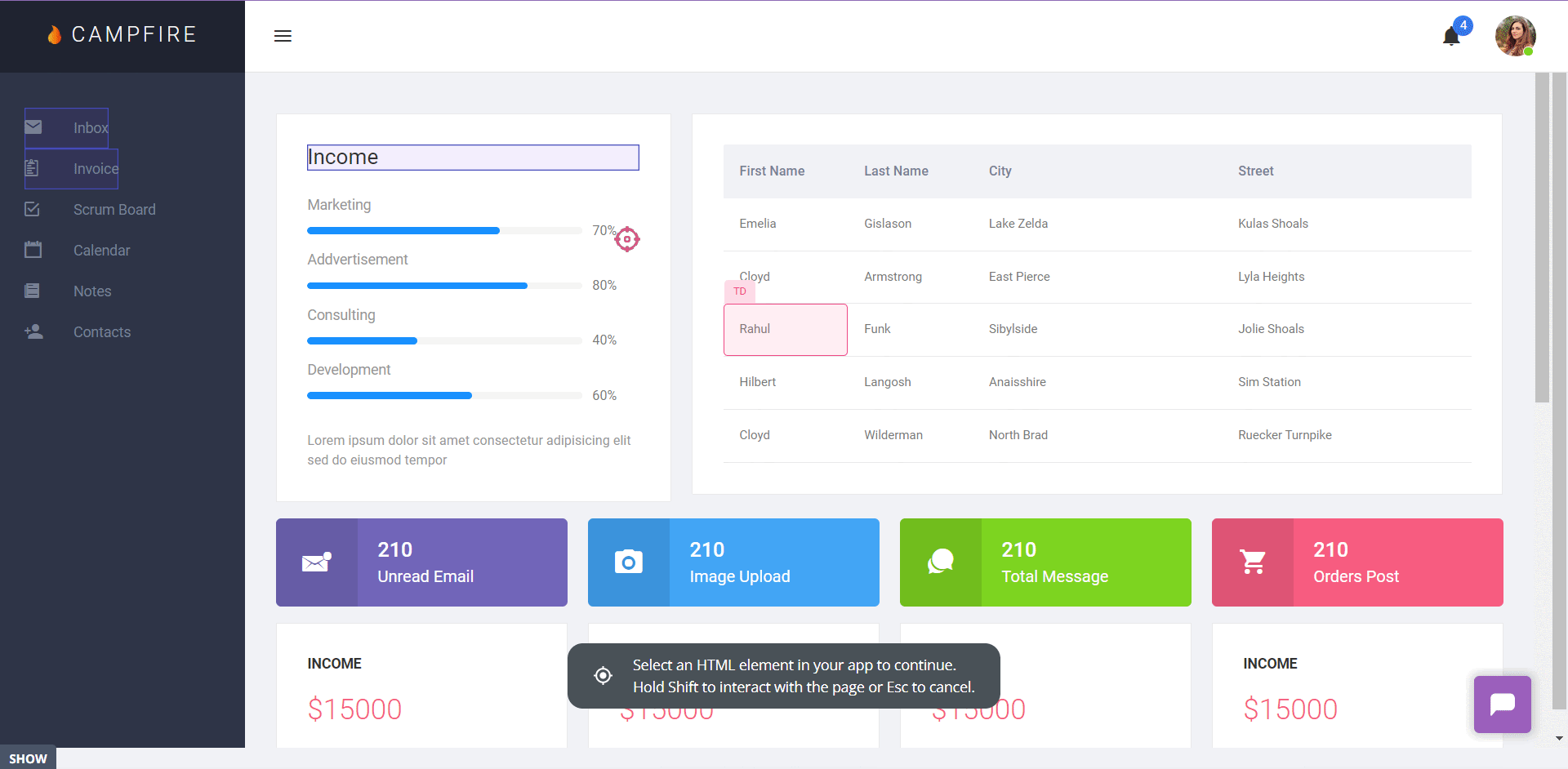
Next, segment users with the same needs that interacted with only part of those features and prompt them to engage with features that will bring them extra value with secondary onboarding.
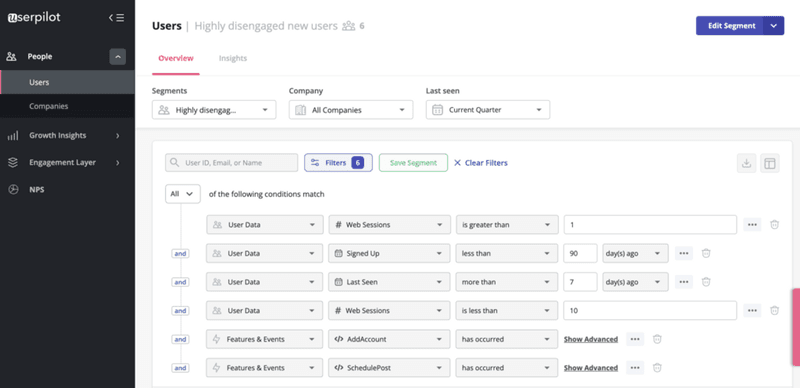
Managing the customer loyalty stage
Customer engagement drives customer loyalty since users stick around when they can solve their jobs without friction. Capitalize on loyal users to collect more data on product improvements and drawbacks to act on it. Here’s how.
Loyal customers are willing to participate in in-app surveys or beta testing, so embed in-app surveys tied back to particular in-app events to gather contextual feedback.
There are two more methods to managing the customer loyalty stage.
Create loyalty programs
A loyalty program is a great way to show users that their continued support and patronage are appreciated. This will help create a long-term relationship between the business and its customers.
Reward programs can include discounts, special offers, or other incentives to make users feel appreciated.
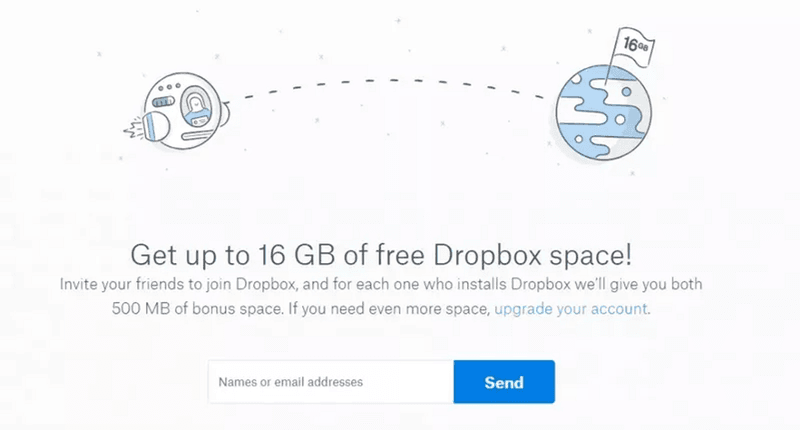
Invite customer reviews and encourage referrals
Turn loyal customers into brand advocates by inviting them to review your product. Create an in-app invitation in the form of a slideout or a modal and trigger it for your loyal customers.
Filter users with a high NPS score which will be your promoters and expose them to the slideout. You can also trigger the review invitation once a user completes an NPS survey.
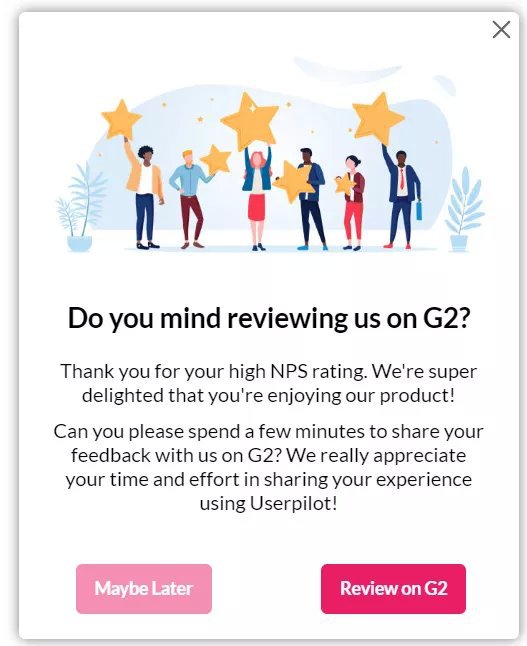
Customer lifecycle management process: Best practices
Now let’s look at some best practices for managing the customer lifecycle.
Map the customer journey
Developing a customer journey map can help you visualize how customers feel at different touchpoints, so you can predict and prevent potential friction, which ultimately leads to increased customer retention.
Here’s an example of a super detailed customer journey map.
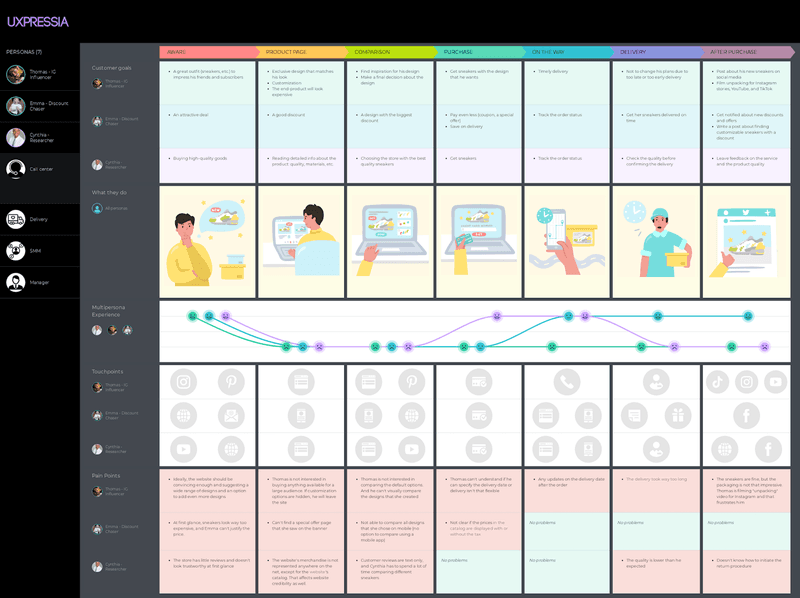
Collect customer feedback at every stage of the customer journey
Having the customer journey map in place, you can go further and collect feedback with in-app surveys targeted to particular events in the user journey. With that, you measure customer satisfaction and identify friction points at particular customer lifecycle stages.
There are different surveys you can use to collect feedback:
- NPS (Net Promoter Score) surveys
- CES (Customer Effort Score) surveys
- CSAT (Customer Satisfaction) surveys
All of them you can build code-free with Userpilot. Not only will you obtain customer data to inform product development, but you can also create customer segments based on the received scores to deliver personalized customer experience.
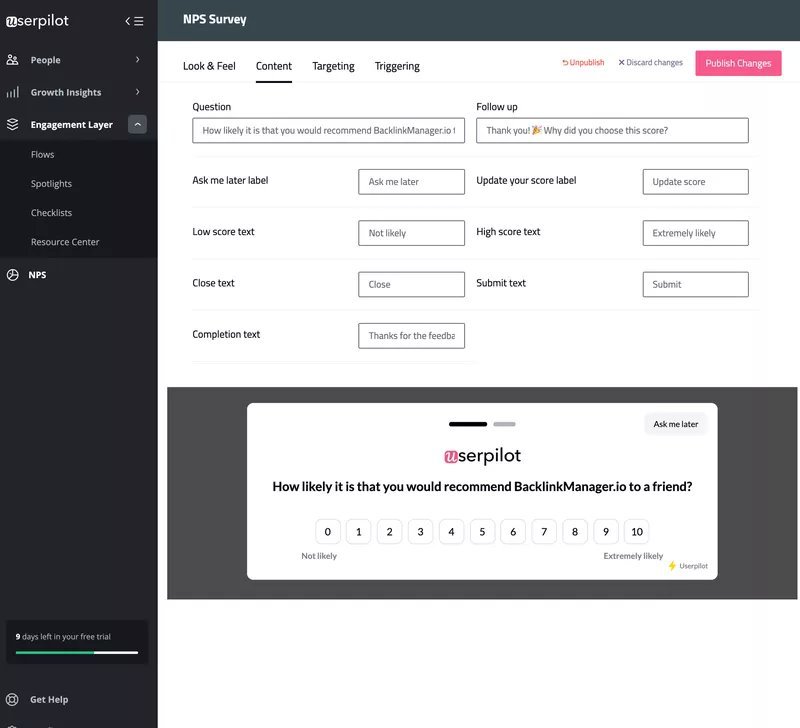
Provide personalized service to boost engagement
Personalized customer service helps you gain a competitive advantage, meet customer expectations, boost conversions, and increase customer retention.
Provide tailored support to help users feel more connected to the product with self-service resources (aka a knowledge base) packed with tutorials, case studies, product academies, the Get Help button, etc.
See an example of a robust self-service resource center built with Userpilot.
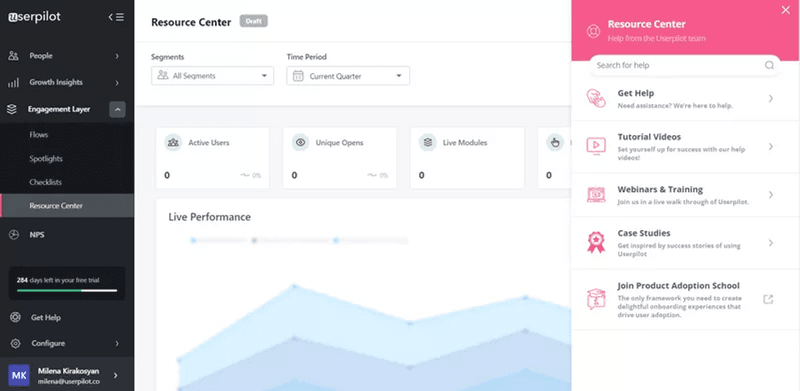
Use customer lifecycle marketing to optimize each stage
Customer lifecycle marketing is about communicating the right message to each individual customer. Focus on understanding your customer’s needs and interests to drive conversions and create brand loyalty.
Employ different tactics at each stage to move users across the funnel. To see which works better, you can experiment with in-app messaging via A/B-test campaigns.
Userpilot — the customer lifecycle management software you need
Userpilot is a versatile tool for customer lifecycle analysis, creating personalized onboarding flows, and delivering marketing messaging in-app at any point of the user journey by predefined events.
In short, Userpilot helps:
- Segment customers at different stages of the customer lifecycle.
- Build unique customer segments thanks to advanced analytics (e.g., based on NPS scores).
- Run in-app microsurveys to collect customer feedback.
- Create onboarding flows using tooltips, modals, checklists, etc.
- Onboard and engage mobile app users by creating personalized messaging, push notifications, and surveys.
You can pretty much build anything on top of your product UI to guide users and prompt engagement with Userpilot. The best part is that all is code-free.
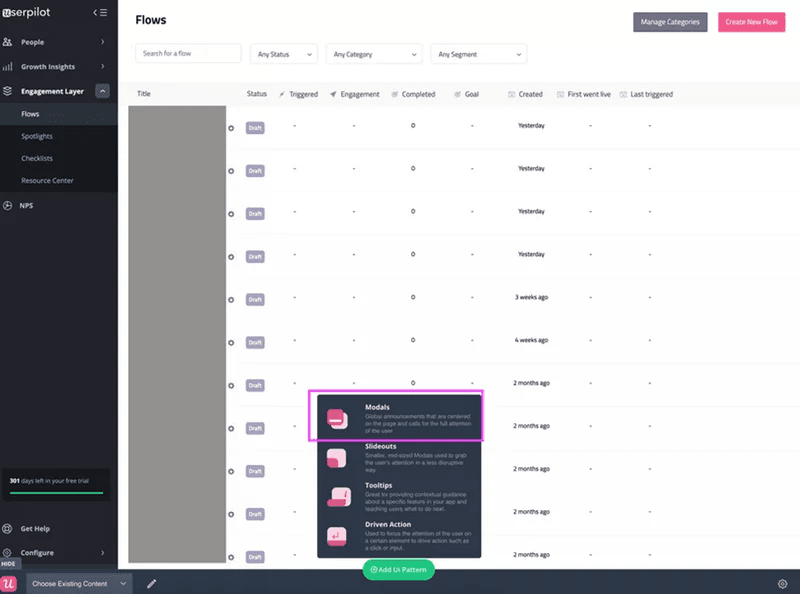
The tool also leverages your customer analytics insights, such as product usage or in-app behavior, so you can create better relationships with customers by delivering contextual help and experiences. You can also use this data to predict and reduce churn.
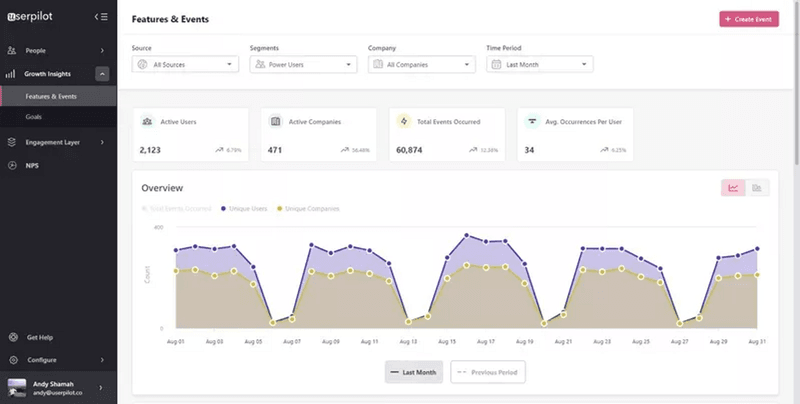
Conclusion
Сustomer lifecycle management plays an important role in customer retention since it helps create a strong bond between the company and the customer. This leads to improved customer stickiness and ROI.
Want to get started with CLM? Get a Userpilot Demo to learn and optimize the customer journey.






